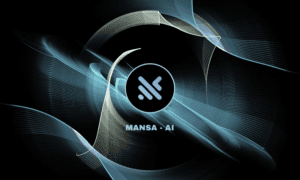In today’s interconnected digital era, Gokul Balaguruswamy Naidu presents a groundbreaking exploration of blockchain technology as a robust solution to the intricate security challenges of the Internet of Things (IoT). His research delves deeply into how blockchain can revolutionize IoT security by ensuring data integrity, enabling secure device authentication, and implementing decentralized control mechanisms. This innovative approach not only fortifies IoT infrastructures against vulnerabilities but also paves the way for a more resilient, scalable, and trust-driven IoT ecosystem.
Unraveling the IoT Security Conundrum
The proliferation of IoT devices has revolutionized industries but has simultaneously exposed them to significant security vulnerabilities. Centralized architectures, often employed in IoT ecosystems, create single points of failure and performance bottlenecks. Traditional security measures fall short in addressing these challenges, given the diverse nature of IoT networks and the resource limitations of connected devices. This analysis underscores how blockchain’s decentralized architecture, coupled with its cryptographic capabilities, offers a resilient and scalable alternative, effectively mitigating risks and enhancing IoT security frameworks.
Data Integrity Through Decentralized Ledgers
Blockchain technology excels in ensuring data immutability and integrity through its distributed ledger system. Each transaction or data point is cryptographically linked, preventing unauthorized modifications. By integrating blockchain with IoT, organizations can eliminate risks associated with tampering or data breaches, enabling secure and transparent device-to-device communication.
Empowering Authentication with Blockchain
The concept of Decentralized Identifiers (DIDs) emerges as a groundbreaking innovation for IoT device authentication. These blockchain-based identifiers enable autonomous validation of devices, removing the dependency on centralized certificate authorities. Smart contracts further bolster security by automating access controls and authentication protocols, creating a trustless environment that is both efficient and secure.
Resilient Network Architectures
Decentralization is at the core of blockchain-IoT integration, eliminating vulnerabilities inherent in centralized systems. Distributed consensus mechanisms ensure network resilience by maintaining data integrity even if individual nodes are compromised. Peer-to-peer communication, coupled with efficient gossip protocols, reduces latency and enhances the overall robustness of IoT networks.
Scalability Challenges and Innovative Solutions
Scalability poses a significant challenge in blockchain-enabled IoT environments, where the exponential growth of devices demands efficient transaction handling. The research explores innovative solutions, such as hierarchical blockchain architectures incorporating side-chains and state channels, which enable high-frequency transactions while preserving the security and integrity of the main chain. By addressing these scalability concerns, these advancements ensure that blockchain technology remains viable and effective for IoT ecosystems, supporting seamless integration and robust performance across diverse applications in a rapidly expanding digital landscape.
Overcoming Technical Hurdles
Despite its transformative potential, blockchain integration in IoT ecosystems encounters notable challenges, particularly related to energy consumption and the limited processing capabilities of IoT devices. Traditional consensus mechanisms like Proof of Work (PoW) require significant computational resources, resulting in scalability and efficiency issues. Addressing these concerns, the research emphasizes the development of lightweight consensus algorithms designed to align with the constraints of IoT devices. These tailored solutions aim to enhance energy efficiency, operational sustainability, and the practicality of blockchain adoption in IoT environments.
Addressing Regulatory Complexities
The regulatory landscape presents significant challenges for blockchain-IoT adoption. Navigating diverse compliance requirements, such as GDPR and cross-border data transmission standards, necessitates the establishment of standardized frameworks. The research highlights the importance of developing unified protocols and interoperability standards to facilitate seamless integration and drive widespread adoption of blockchain-based IoT solutions, ensuring compliance and operational efficiency across different regions and industries.
Future-Forward Innovations
Looking ahead, the integration of artificial intelligence (AI) with blockchain opens new avenues for IoT security. AI-driven anomaly detection, predictive maintenance, and automated responses enhance the resilience of IoT ecosystems. Privacy-enhancing technologies, such as zero-knowledge proofs and homomorphic encryption, further strengthen data protection measures.
In conclusion, Gokul Balaguruswamy Naidu‘s groundbreaking research highlights blockchain’s revolutionary potential to enhance IoT security frameworks. By tackling critical vulnerabilities and providing decentralized, scalable solutions, blockchain offers a robust foundation for secure digital ecosystems. This integration not only fortifies IoT infrastructure against emerging threats but also promotes trust, transparency, and resilience in connected environments. As industries increasingly adopt IoT technologies, the strategic implementation of blockchain will undoubtedly shape a more secure, efficient, and interconnected future, paving the way for technological innovation and global advancement.



































